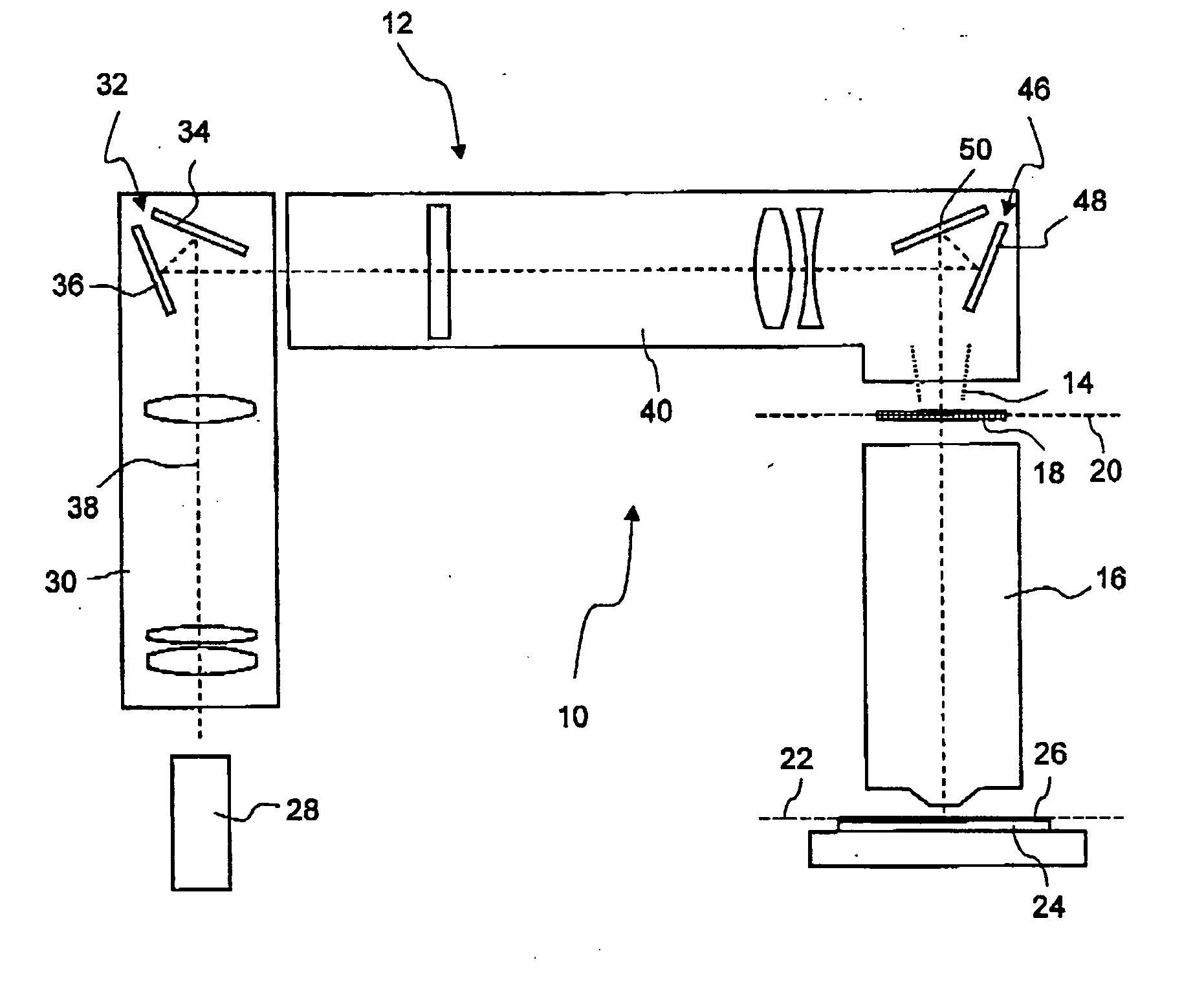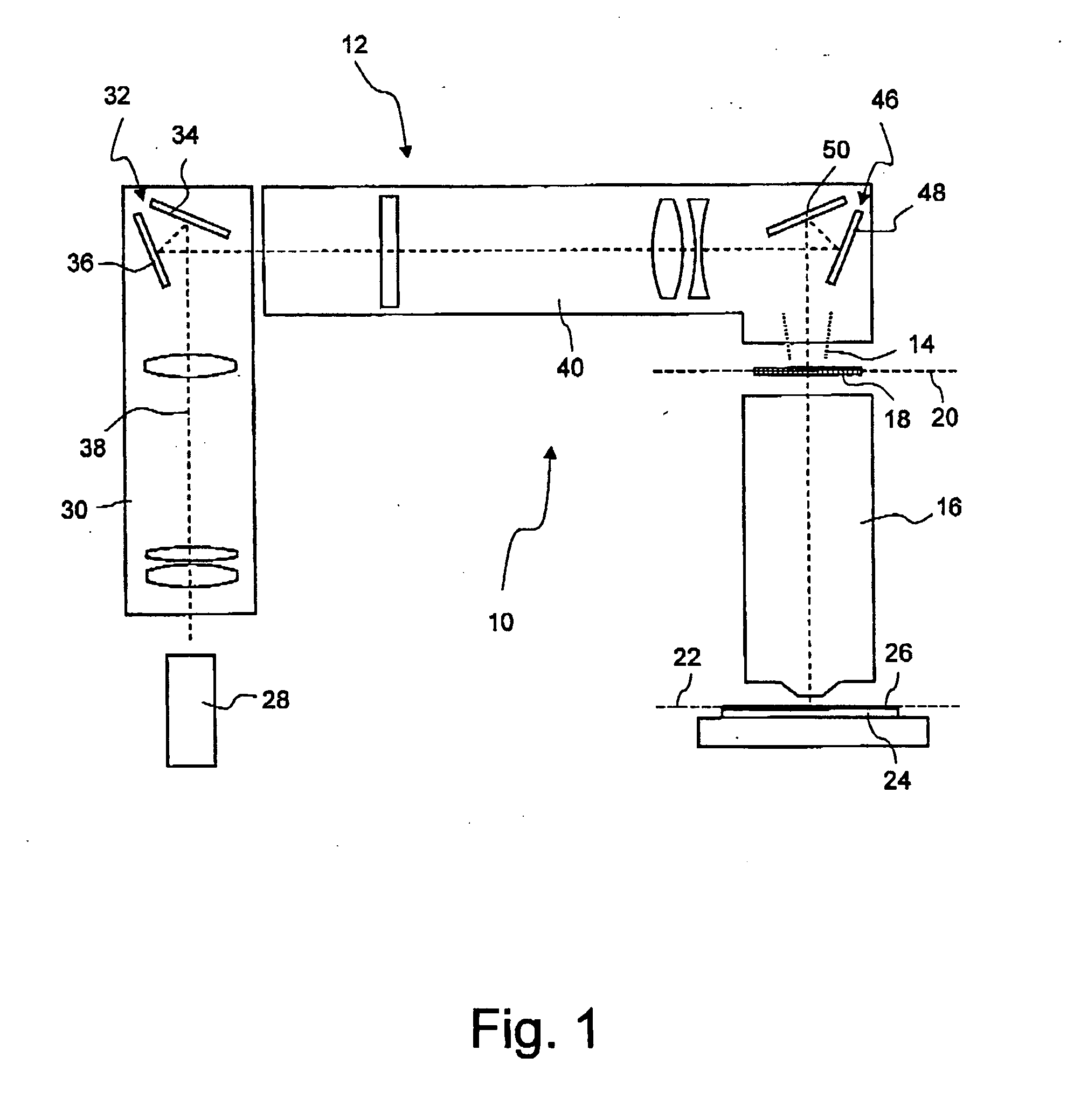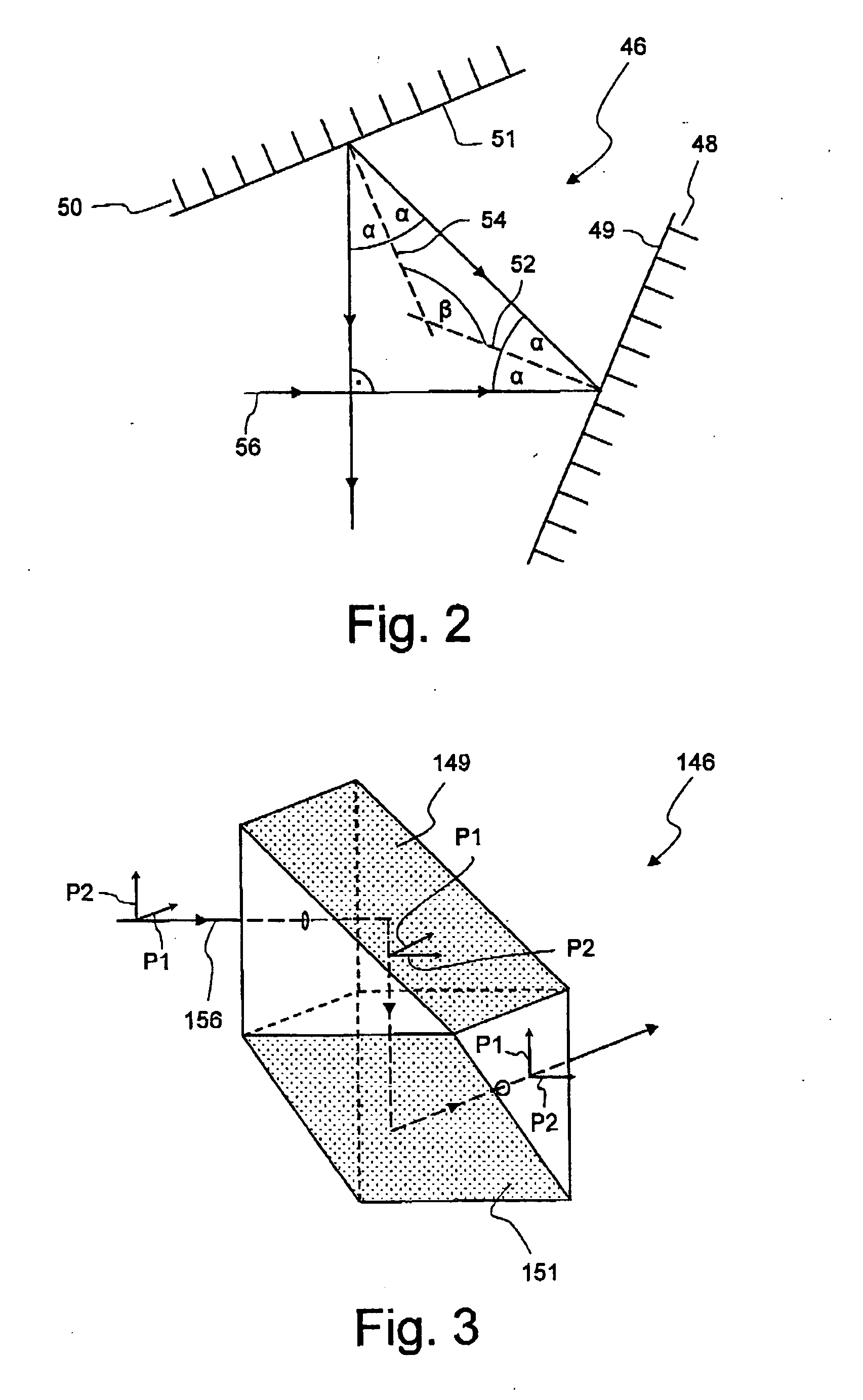Optical system, in particular illumination system, of a microlithographic projection exposure apparatus
an exposure apparatus and optical system technology, applied in the direction of photomechanical apparatus, printers, instruments, etc., can solve the problems of undesirable effect on relatively difficult control of the polarization state of the projection light passing through, and undesirable affecting the polarization state of the projection light, etc., to achieve the effect of improving the control of the polarization of the projection ligh
- Summary
- Abstract
- Description
- Claims
- Application Information
AI Technical Summary
Benefits of technology
Problems solved by technology
Method used
Image
Examples
second embodiment
[0046]FIG. 3 represents the second deviating optics in accordance with a second embodiment, in perspective. The second deviating optics are configured here as a Nachet prism 146. For the sake of clarity, the Nachet prism 146 in FIG. 3 is rotated so that an axially parallel ray 156 arriving from the left-hand side does not leave the Nachet prism 146 downwards but into the plane of the paper. By rotating the Nachet prism 146 by 90° about a horizontal axis, the ray 156 can be deviated in the same direction as that represented in FIG. 2.
[0047] The Nachet prism 146 contains a first reflecting surface 149 and a second reflecting surface 151, which are formed by suitable coatings and the normals of which make an angle of 60° between each other. The reflecting surfaces 149, 151 are furthermore mutually arranged so that the axially parallel incident light ray 156 arrives with an angle of incidence of 45° at the first reflecting surface 149, and subsequently arrives at the second reflecting s...
third embodiment
[0050]FIG. 4 shows second deviating optics, denoted overall by 246, in accordance with a third embodiment in a similar representation to FIG. 2. A first plane mirror 248 and a second plane mirror 250 are mutually arranged in the deviating optics 246 so that an incident axially parallel light ray 256 arrives with a relatively large angle of incidence a at a reflecting surface 249 of the first plane mirror 248. The second plane mirror 250 is aligned so that the ray reflected by the first plane mirror 248 arrives with approximately the same angle of incidence a at its reflecting surface 251.
[0051] Between the two plane mirrors 248, 250, a half-wave plate 60 is arranged so that the polarization directions of light passing through are rotated by 90°. In this way, a similar effect is achieved as with the Nachet prism 146. Specifically, the s-component and the p-component of the ray 256 exchange their roles when passing through the half-wave plate 60, so that the polarization component whi...
PUM
 Login to View More
Login to View More Abstract
Description
Claims
Application Information
 Login to View More
Login to View More - R&D
- Intellectual Property
- Life Sciences
- Materials
- Tech Scout
- Unparalleled Data Quality
- Higher Quality Content
- 60% Fewer Hallucinations
Browse by: Latest US Patents, China's latest patents, Technical Efficacy Thesaurus, Application Domain, Technology Topic, Popular Technical Reports.
© 2025 PatSnap. All rights reserved.Legal|Privacy policy|Modern Slavery Act Transparency Statement|Sitemap|About US| Contact US: help@patsnap.com



